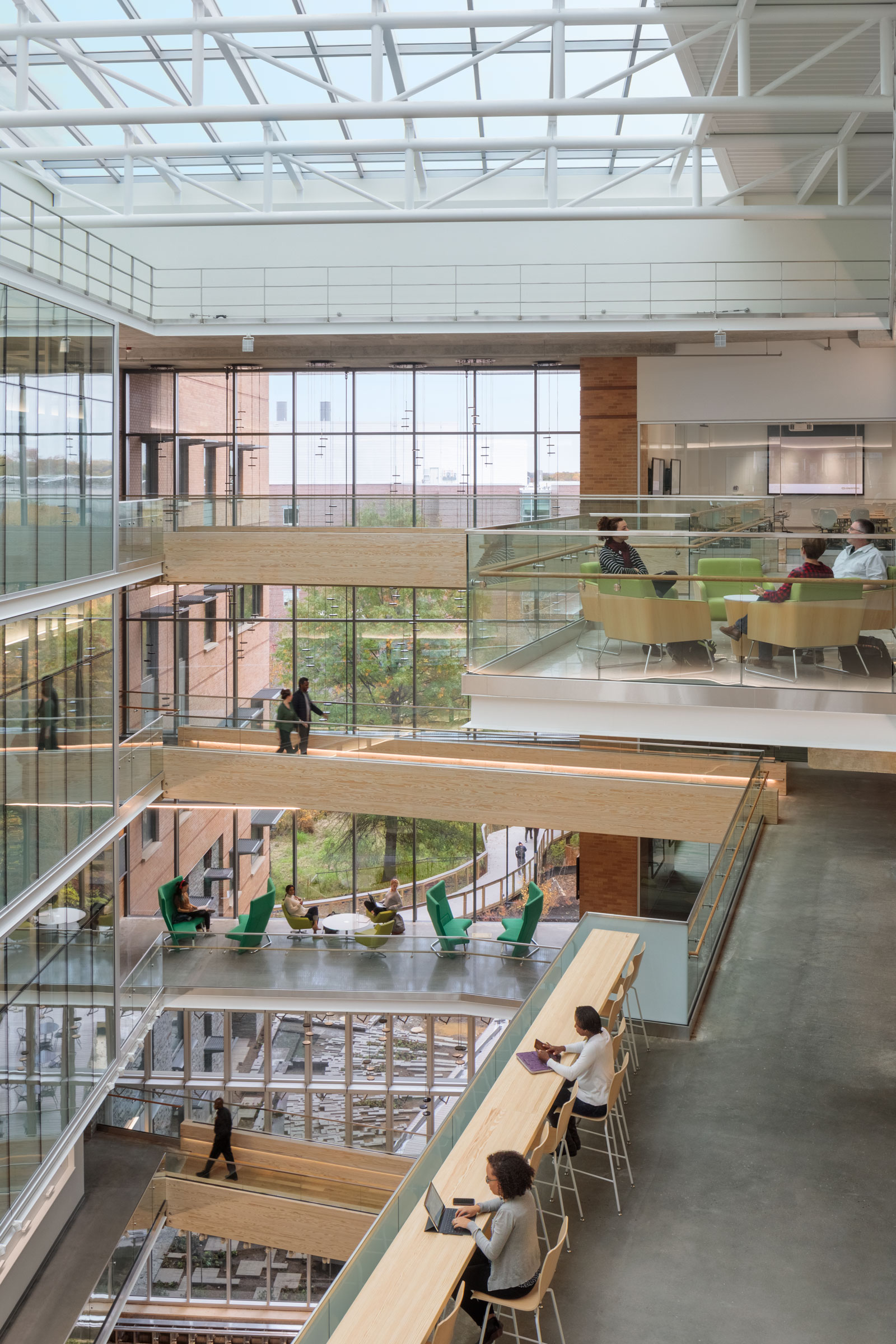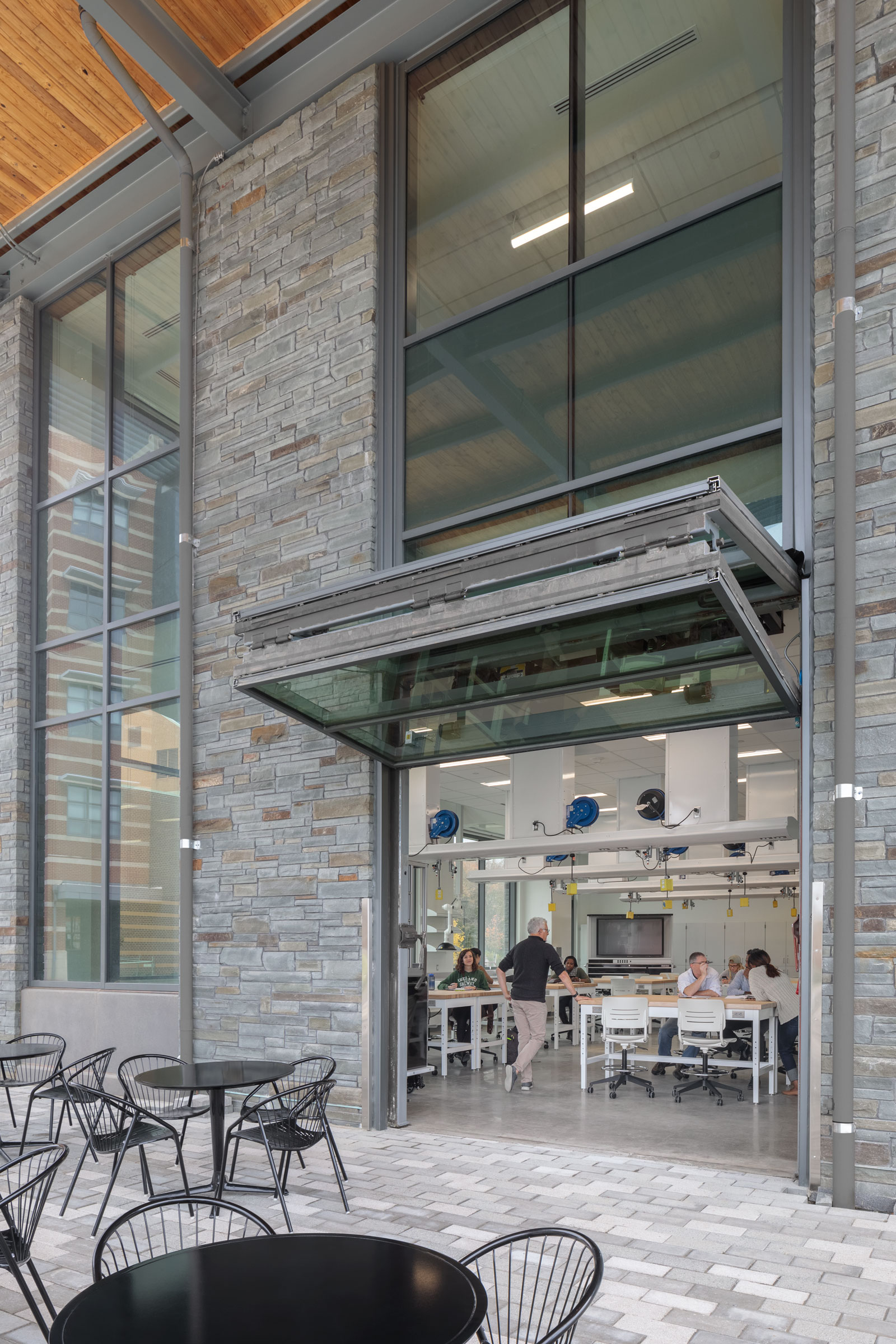Story at a glance:
- Ensuring a project’s sustainability begins with surveying the site’s natural gifts.
- Architects should also consider the communities they serve in order to have a successful project.
- Some design elements are invisible, sparking an emotional connection to a place.
As designers, it is our responsibility to make building performance and human health a priority on every project. Sustainability is not an on or off switch, and my job is to empower our team at Cooper Carry to ask questions, push boundaries, and be relentless in our duty to the environment, knowing the impact we can make in the world and in the lives of people.
Sustainability is everyone’s responsibility, and as designers we are uniquely positioned to respond to climate change as a design problem, as proven by LEED, Fitwel, and other building rating systems being pursued at record rates. This staggering push toward sustainability demonstrates that the world is recognizing the importance of protecting the environment, and, specifically in our case, integrating sustainability in design.
What Makes a Project Sustainable?
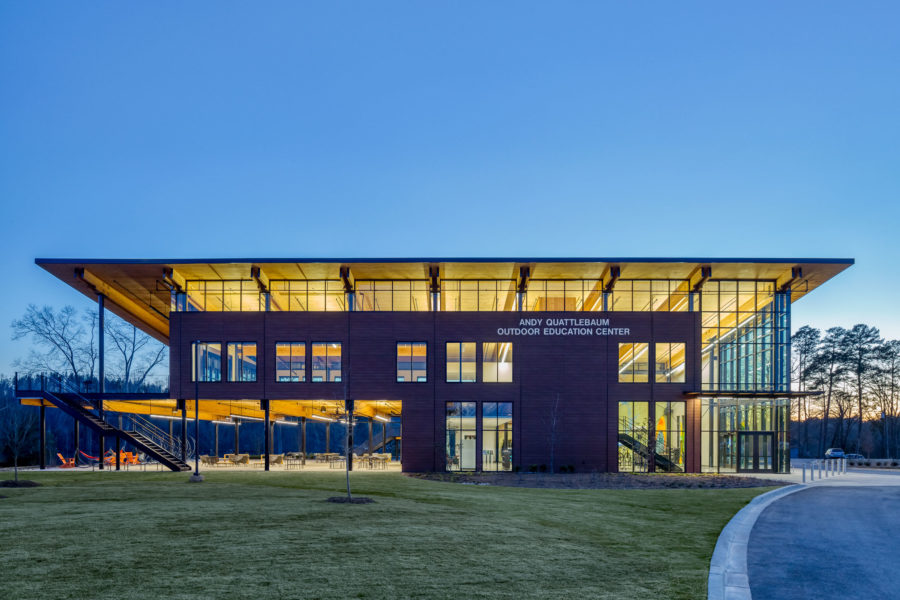
Andy Quattlebaum Outdoor Recreation Center. Photo by Jonathan Hillyer
Measuring sustainability spans across many disciplines and can be evaluated qualitatively or quantitatively. It’s important to first determine what we’re measuring ourselves against, whether it be a specific goal like making a building net-zero or pursuing a certification. It’s also important to think of the building or project as a living organism, balancing resources like energy, water, and waste in meaningful ways. Creating a dialogue to determine a strategic approach is essential in the discovery phase of a project to guarantee that all avenues are explored. Surveying the natural gifts of a site like solar capacity for optimizing daylight, heavy rain in the area that can be reused onsite, or utilizing new and existing technologies are paramount first steps in any design project.
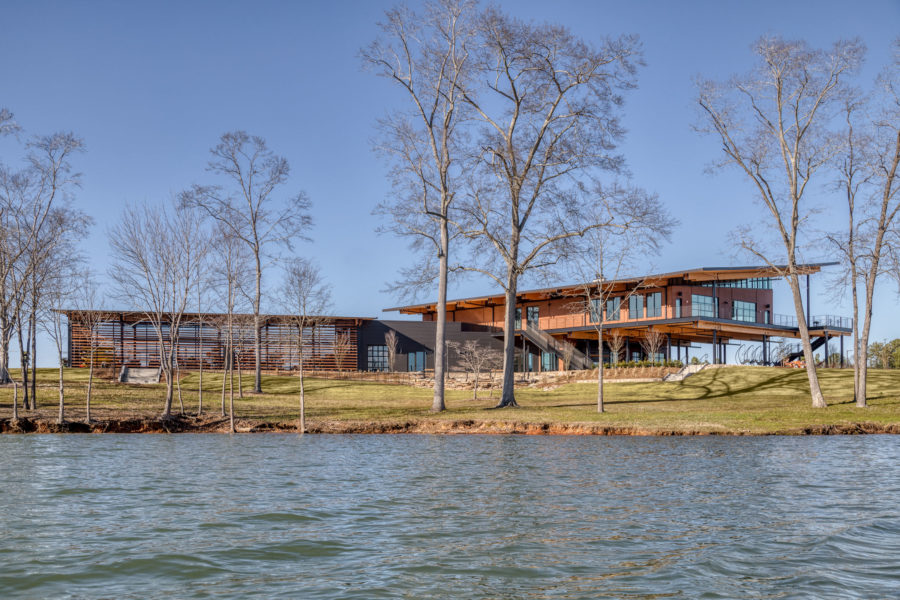
Outside the Andy Quattlebaum Outdoor Recreation Center. Photo by Jonathan Hillyer
For example, at the Andy Quattlebaum Outdoor Recreation Center at Clemson University, Cooper Carry sourced southern yellow pine from an Alabama supplier for the mass timber construction project. The wood type is known for being lightweight, fire resistant, and rapidly renewable. Mass timber also sequesters carbon from the atmosphere during the material’s life as a tree, absorbing carbon dioxide and transforming it into biomass through photosynthesis. Additionally, by sourcing the southern yellow timber from Alabama, Cooper Carry was able to significantly reduce construction costs compared to using timber from other regions of the country.
Where to Start with Sustainability
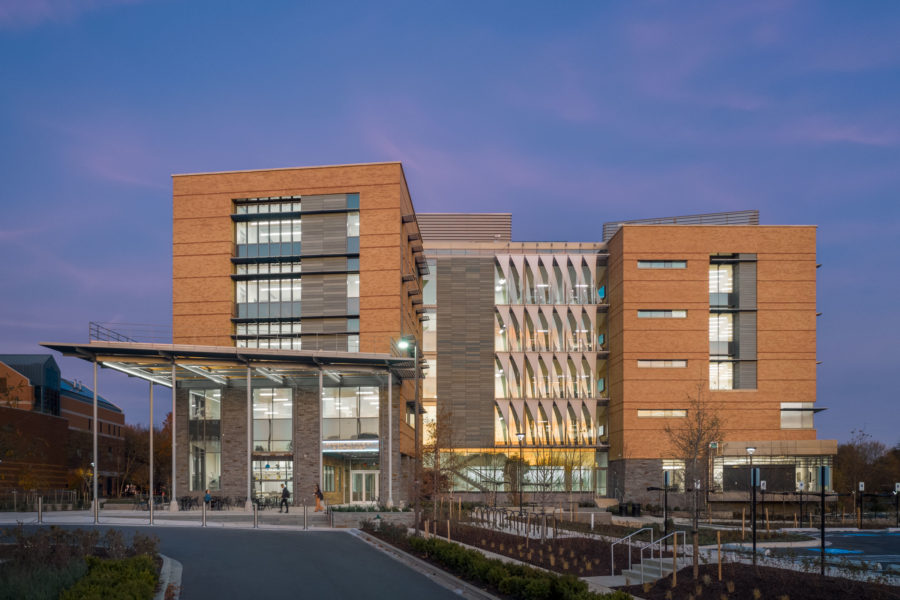
Cooper Carry designed the Biomedical Sciences and Engineering education facility at The Universities at Shady Grove. Photo by Feinknopf Photography
Knowledge is power, and the first step to approaching sustainability in design is to be aware of all of the opportunities available. At Cooper Carry we are weaving building performance and human health objectives into our design process. Our team is developing an internal resource system centered around environmentally conscious design strategies for our architects and designers to reference. This central resource system is stacked with the latest technology and tools so designers can self-educate and become masters in sustainable design. Investing in sustainability leaders and educational resources can also help with educating clients on the various certifications available to validate their efforts, such as ILFI, LEED, WELL, and Fitwel.
We must also consider the communities in which our projects serve, as the local environment and population are critical to the success of any development. A project must integrate and connect with the community in order to survive. Almost like a living organism, it has to be accepted and flow within the ecosystem where it lives.
- Photo by Feinknopf Photography
- Photo by Feinknopf Photography
For The Universities at Shady Grove, Cooper Carry designed its Biomedical Sciences and Engineering education facility with the intention of immersing students in the surrounding natural environment to maximize a connection to the outdoors. Located adjacent to a significant wetland area within the Piney Branch watershed, a 500-foot elevated boardwalk was constructed from heavy timber across the wetlands’ 100-year floodplain to provide direct access from a neighboring parking deck while minimizing impacts on the wetland.
Approaching Sustainability with Clients
Every client has a different set of values and goals, whether that is leasing up and selling a building or owning and operating for the long term. It’s important to make sustainability personal, by evaluating what a client wants and what you can do to bridge the gap between sustainability and bottom-line performance.
For a client who is looking to sell, marketing the building will be a top priority and can be done through building performance and human health aspects, which improves the overall value for the investment. Maintenance and operations costs come into play for long-term owners and create opportunities for a greater return-on-investment.
Invisible Design that Promotes Health & Wellness

Midtown Union amenity deck. Rendering courtesy of Cooper Carry
Design isn’t always something you can touch or see. Sometimes it is simply felt. Biophilia, natural light, and access to clean air are seemingly invisible design elements where sustainability shines best in human-centered ways. Invisible design can spark an emotional connection to a space, which helps ease anxiety and strengthens a person’s mental health. The workplace environment especially benefits from invisible design, as attracting and retaining employees is crucial in today’s environment amidst the Great Return and Great Resignation.
For Midtown Union, a mixed-use hub in Atlanta, Cooper Carry prioritized sustainability and wellness for the office component with a strategic blend of biophilic design elements that include floor-to-ceiling windows, plant fauna scattered throughout gathering areas, a 12,000-square-foot outdoor amenity terrace called The Yard on the eighth floor, as well as additional elevated landscape decks offering alternative meeting space and open-air workstations. These elements diminish physiological implications of the typical office space while promoting health and wellness for tenants and employees.
In all, sustainability is everyone’s responsibility. As architects and designers, we have a duty to shape the environments people spend their lives in. We design thoughtful spaces through a holistic approach to create positive environmental impacts because at the end of the day, good design is sustainable design.


